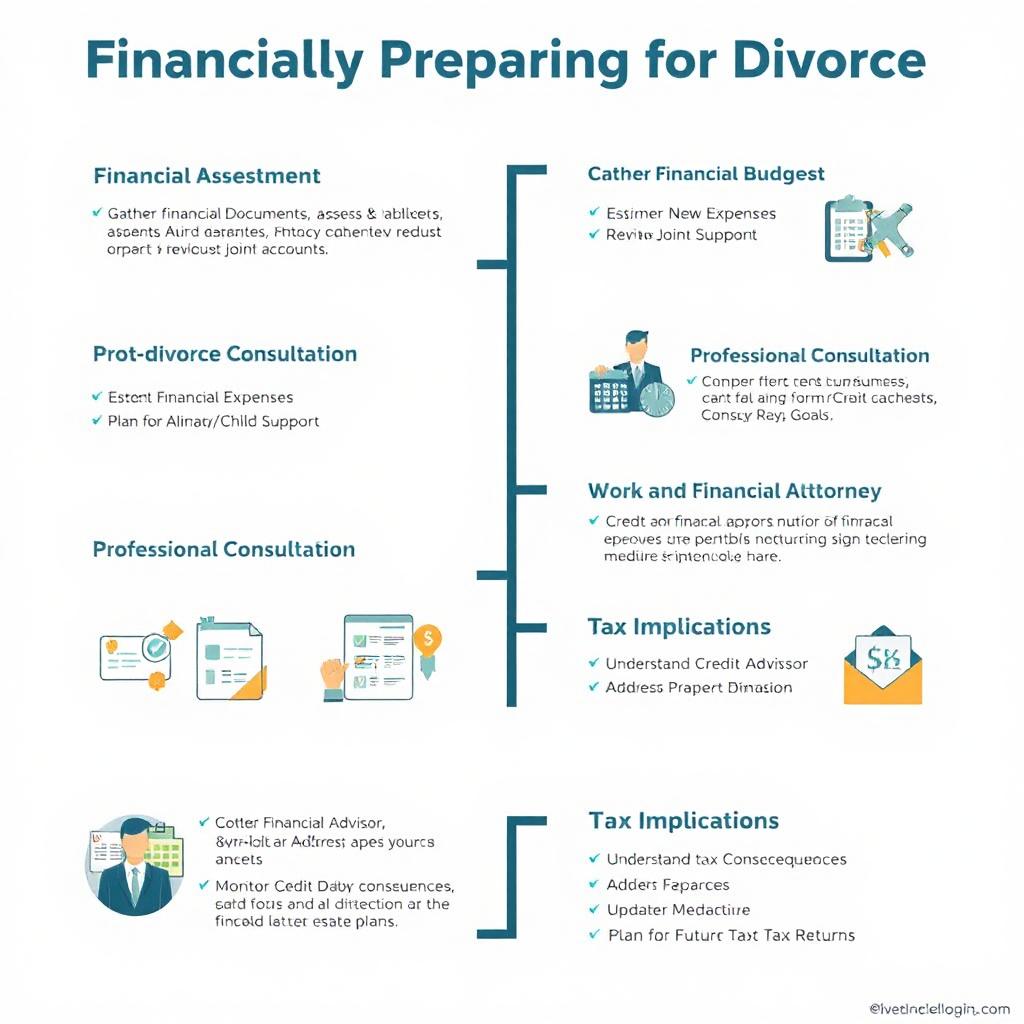Divorce can be an emotionally and financially challenging experience. Properly preparing for the financial aspects of a divorce can help mitigate stress and ensure you emerge in a stable position. Whether you’re contemplating divorce or are already in the process, understanding the financial implications and taking proactive steps can make a significant difference. This guide provides essential tips to help you financially prepare for divorce and secure your future.
1. Understand Your Financial Situation
1.1. Gather Financial Documents
Start by collecting all relevant financial documents, including tax returns, bank statements, credit card statements, retirement account statements, and property deeds. Having a comprehensive view of your financial situation is crucial for informed decision-making.
1.2. Assess Your Assets and Liabilities
Make a detailed list of all assets (e.g., real estate, vehicles, investments) and liabilities (e.g., mortgages, loans, credit card debt). Understanding your net worth will help you evaluate how to divide assets and manage debts during the divorce process.
1.3. Review Joint Accounts and Debts
Examine any joint bank accounts, credit cards, and loans. Discuss how these will be handled and whether they need to be divided or closed before the divorce is finalized.
2. Create a Post-Divorce Budget
2.1. Estimate Your New Expenses
Consider the changes in your living expenses post-divorce. This includes housing costs, utilities, groceries, and healthcare. Create a budget that reflects your new financial reality to ensure you can manage your expenses effectively.
2.2. Plan for Alimony and Child Support
If alimony or child support is part of the divorce agreement, factor these payments into your budget. Ensure you understand the amount, frequency, and duration of these payments and how they will impact your financial situation.
2.3. Adjust Your Financial Goals
Reevaluate your financial goals in light of the divorce. This may include retirement planning, savings goals, or investments. Adjust your plans to align with your new circumstances and financial capabilities.
3. Consult Financial and Legal Professionals
3.1. Hire a Financial Advisor
A financial advisor can help you understand the financial implications of the divorce, develop a new financial strategy, and plan for your future. Look for an advisor with experience in divorce-related financial planning.
3.2. Work with a Divorce Attorney
An experienced divorce attorney can guide you through the legal aspects of divorce, including asset division, spousal support, and child custody arrangements. Ensure your attorney understands your financial concerns and goals.
3.3. Consider Mediation
Mediation can be a cost-effective way to resolve financial disputes and negotiate a fair settlement. A mediator can help both parties reach an agreement that is equitable and minimizes the emotional and financial strain of litigation.
4. Protect Your Credit and Financial Future
4.1. Monitor Your Credit Report
Check your credit report for any inaccuracies or unexpected changes. Ensure that joint accounts are managed appropriately and that your credit is not negatively affected by the divorce.
4.2. Separate Your Finances
Open individual bank accounts and credit cards to establish financial independence. This will help you manage your own expenses and build your credit history separately from your ex-spouse.
4.3. Update Estate Plans and Beneficiaries
Revise your will, trusts, and beneficiary designations to reflect your new situation. Remove your ex-spouse from any financial accounts, insurance policies, or estate plans where they are named as a beneficiary.
5. Prepare for Potential Tax Implications
5.1. Understand Tax Consequences
Divorce can have significant tax implications, including changes in filing status, deductions, and credits. Consult a tax advisor to understand how the divorce will impact your taxes and to plan accordingly.
5.2. Address Property Division
The division of assets and liabilities can affect your tax situation. Be aware of how the transfer of property, retirement accounts, or other assets might impact your tax liability.
5.3. Plan for Future Tax Returns
Adjust your tax withholding or estimated payments based on your new financial situation. This will help you avoid surprises when it’s time to file your tax return

